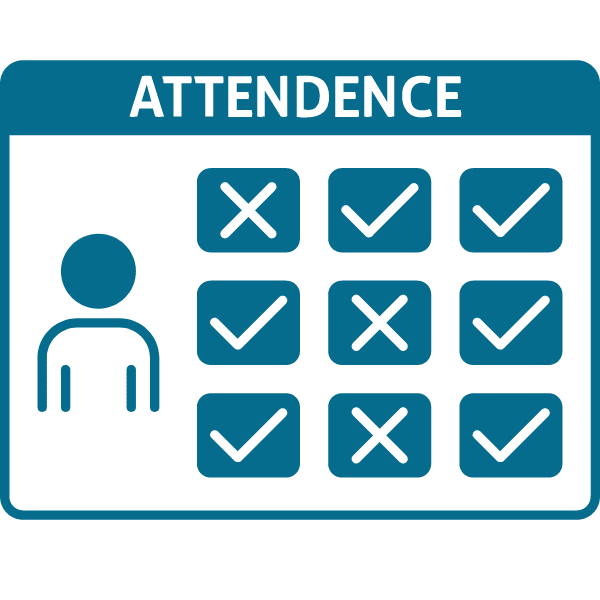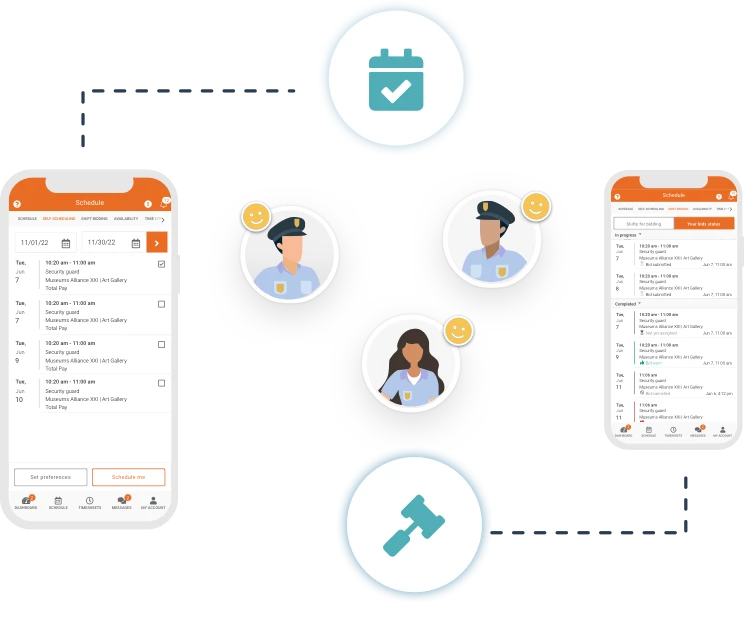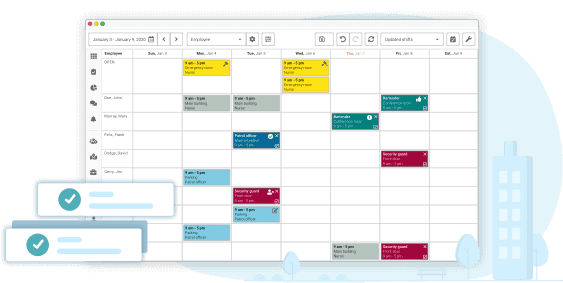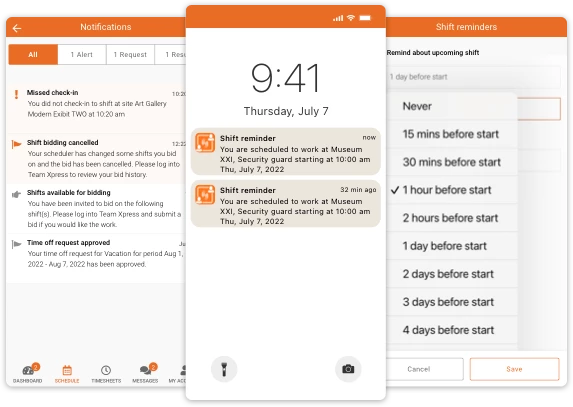Now, more than ever, employers need to take extra steps when recruiting and maintaining employees. These changes are not easy for every organization, but they are necessary in order to attract and retain top talent. One of the most transformative steps an organization can take is to implement a collaborative work schedule. But what does this type of shift scheduling look like and how can it benefit your business?
What is a Collaborative Work Schedule?

A collaborative work schedule is an approach where team members, rather than management alone, have a say in the scheduling process. Teams can use the right tools to share preferences, change shifts, and find the best working hours. This makes staff schedules more flexible and employee-friendly. This is beneficial to both the organization and the employees – win, win!
Why use Collaborative Work Scheduling?
1. Improved Employee Satisfaction
Employee Autonomy:
When employees have a say in their schedules, they feel more in control of their work-life balance. This sense of autonomy is directly linked to increased job satisfaction. In fact, 72% of employees say a good work-life balance is very important to them. Collaborative scheduling shows employees you care about their personal lives and careers.
Reduced Burnout:
Overworking and under-resting can lead to burnout. 51% of US workers surveyed say they have experienced burnout more than once. Collaborative scheduling considers individual preferences and needs, ensuring that team members get adequate rest and don’t feel overwhelmed.
2. Enhanced Productivity

Optimal Shift Assignments:
When teams collaborate on their schedules, they can pinpoint when they’re most productive. Some might be morning people, while others might be night owls. By accommodating these preferences, you optimize work hours for maximum output.
Reduced Absenteeism:
Happy and well-rested employees are less likely to call in sick or skip shifts. By reducing absenteeism, businesses can maintain a consistent level of productivity. Absenteeism doesn’t just impact attendance and productivity, it can also affect morale and the overall work environment.
3. Flexibility for Rapid Changes
Real-time Adaptability:
The modern workplace is dynamic. Changes happen fast, and a rigid schedule can be a hindrance. With collaborative scheduling, teams can swiftly adapt to changes in real time, ensuring that business operations remain smooth.
Employee-driven Shift Swaps:
Instead of going through a lengthy managerial process, employees can use collaborative tools to swap shifts amongst themselves. This employee-driven approach makes it faster and more efficient to handle sudden changes.
4. Cost Savings for the Business
Efficient Use of Resources:
By using a collaborative scheduling tool, companies can minimize overlaps and ensure optimal staffing. This leads to better resource allocation and reduced costs associated with overstaffing or understaffing.
Reduced Turnover:
A satisfied workforce means lower turnover rates. As recruitment and training new staff can be costly, retaining skilled employees can lead to significant savings in the long run.

5. Strengthened Team Cohesion
Transparency and Trust:
When team members have insight into the scheduling process, it fosters a sense of transparency. This openness can enhance trust within the team, leading to a more cohesive work environment.
Promotion of Mutual Respect:
Collaborative scheduling is built on the premise of mutual respect. As team members communicate their preferences and understand those of their peers, they cultivate an environment where everyone’s needs are valued.
Implementing Collaborative Schedules: A Step-by-Step Guide
The benefits of collaborative scheduling are clear, but how do businesses effectively shift from traditional scheduling methods to more inclusive ones? The answer lies in selecting the right tools and embracing a culture of collaboration. Here’s a step-by-step guide, which can be implemented with Celayix’s employee scheduling software.
1. Onboard the Right Tool: Celayix Employee Scheduling Software
The first step to implementing a collaborative schedule is adopting a comprehensive platform that meets your unique scheduling needs. Celayix’s employee scheduling software offers an intuitive user interface and features tailor-made for collaboration. With Celayix, it is much easier to schedule employees while also welcoming collaboration.

2. Empower Employees with Self Scheduling
Flexibility in the Hands of Employees:
Flexible schedules are the ultimate form of collaborative work schedules. Self-scheduling is a standout feature where employees can pick their shifts based on their availability and preferences. Organizations can increase staff satisfaction and commitment by giving them control over their schedules, within certain limits set by managers.
Through the employee app, employees can see open shifts that are available, and claim them. This means they can choose shifts that work for them and allow them to achieve work-life balance.
3. Leverage Shift Bidding to Optimize Resource Allocation
Transparent Shift Distribution:
Shift bidding is a dynamic feature that brings transparency to the shift allocation process. Employees can bid on available shifts, ensuring they have a fair opportunity to work hours that best suit their needs. This system not only promotes fairness but also ensures that the most motivated and qualified individuals fill each shift.
4. Capture Employee Availability with Precision
Streamline Scheduling with Availability Input:
Gone are the days when managers had to guess or manually track the availability of each team member. With Celayix’s availability input feature, employees can directly communicate their available hours. This provides schedulers with a clear picture, reducing the chances of scheduling conflicts and enhancing overall efficiency.
5. Train the Team
A new system, no matter how intuitive, requires training. Ensure that your team understands the features and benefits of Celayix’s software. Host training sessions, create user-friendly guides, and ensure that there’s a clear line of communication for any queries.
6. Monitor, Review, and Iterate

As with any new process, there will be a period of adjustment. Regularly review the collaborative scheduling process, gather feedback from team members, and make necessary tweaks. This iterative approach ensures that the system continues to meet the evolving needs of the business and its employees.
Transitioning to a collaborative work schedule can seem daunting, but with the right tools, it becomes a seamless journey. Celayix’s robust employee scheduling software offers the perfect blend of features to foster collaboration while ensuring efficiency. From self-scheduling to shift bidding, the platform is designed to empower employees while optimizing the scheduling process. It can also help you reduce labor costs and improve overall operations.
Embrace the future of workforce management with Celayix. Experience firsthand how collaborative scheduling can transform your business and make creating schedules easier than ever before. Try a free trial of Celayix today!





